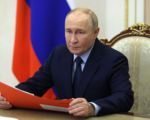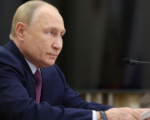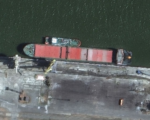1,000 Days of War in Ukraine Spurs Unprecedented Automation Boom

Battlefield Challenges Drive Technological Innovation
As Russia’s invasion of Ukraine enters its 1,000th day, the conflict has evolved into a “war of robots,” with both sides heavily investing in automation, drones, and artificial intelligence to reduce human risk and increase battlefield efficiency.
The turning point came after Ukraine’s summer 2023 counteroffensive struggled against Russia’s extensive drone operations, fortified positions, and landmines. This spurred a surge in demand for advanced technologies like drone signal jammers and unmanned systems.
- Drone Production: Ukraine and Russia are on track to produce approximately 1.5 million drones each in 2024. These are mostly low-cost, first-person-view drones used for reconnaissance and direct attacks.
- Electronic Warfare (EW): Ukrainian companies, including startups like Unwave, now manufacture thousands of systems monthly to disrupt drone communications and counter Russian aerial dominance.
Shift Toward Automation
The exhaustion of human resources has pushed both Ukraine and Russia to rely increasingly on unmanned systems. Ukrainian innovation is leading the charge:
- Unmanned Ground Vehicles (UGVs): Over 160 Ukrainian firms now produce UGVs for supply delivery, casualty evacuation, and remote combat.
- Automated Weapons: Frontline units are employing remotely operated machine guns, allowing operators to strike from safer, remote locations.
- AI and Remote Warfare: Automation and AI integration are becoming central to Ukraine’s defense strategy. Herman Smetanin, Ukraine’s arms minister, described this shift as the foundation for a future “war of robots.”
Economic and Industrial Transformation
Ukraine’s defense sector has undergone rapid expansion, with over 800 companies—mostly founded post-2022—emerging to meet wartime demands.
- Investment and Growth: The government has poured $1.5 billion into upgrading defense manufacturing, growing the sector’s capacity from $1 billion in 2022 to $20 billion in 2024.
- Challenges: Despite this growth, Ukraine can afford to utilize only half of its defense manufacturing output due to funding constraints. Additionally, strict profit margin limits, insufficient long-term procurement contracts, and a ban on arms exports hinder further expansion.
The Future of Warfare and Defense
As automation reshapes the battlefield, Ukraine hopes its defense innovations will fuel economic recovery post-conflict. However, significant challenges remain:
- Workforce Shortages: A lack of qualified staff has led some companies to consider relocating operations abroad.
- Export Restrictions: Wartime bans on arms exports prevent companies from generating capital, despite growing international demand.
President Volodymyr Zelenskyy has acknowledged these issues and promised reforms to address industry concerns.
Conclusion
The war in Ukraine has become a proving ground for rapid technological advancement, with automation and drones playing pivotal roles. While these innovations protect lives and enhance combat capabilities, they also highlight the evolving nature of modern warfare, where machines increasingly replace humans on the frontlines.





















